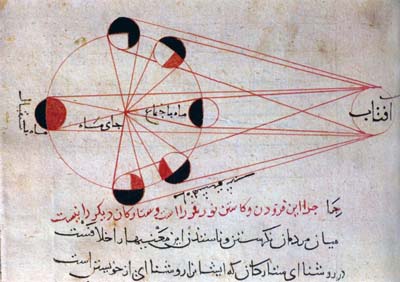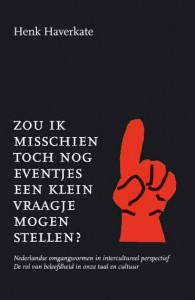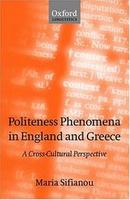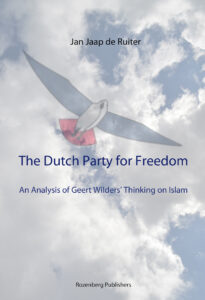Household Governance and Time Allocation – Four Studies on the Combination of Work and Care
 One isn’t enough, but both is too much; these words by a female blue-collar worker express the current dilemma of many employees in combining work and care. In all modern societies couples face an increasing need to arrange the combination of work and care in a new way.
One isn’t enough, but both is too much; these words by a female blue-collar worker express the current dilemma of many employees in combining work and care. In all modern societies couples face an increasing need to arrange the combination of work and care in a new way.
The traditional household model with a male breadwinner who is responsible for paid work, career and income, and his wife, who takes care of all household obligations, is losing its relevance, and fits the values and preferences of the majority of couples less and less well. Over the past decades women have increasingly entered the labour market and the number of two-earner couples has been growing. Gender differences in educational achievements and earning capacities have decreased. The values and preferences of couples put great weight on an egalitarian relationship and equal engagement of both partners in work and care.
Besides the traditional male breadwinner model, a wide variety of different earning models and household constellations has emerged. In some countries, like the Netherlands or Germany, the majority of couples are two-earner couples.
Current research provides evidence that a considerable number of these couples are not able to achieve the work-life balance desired. Several studies report an increase in hours of paid work and a high overall work load in the household (Breedveld et al., 2006; TNO Arbeid, 2003), persistent gender differences in the division of paid and unpaid work (Van der Broek & Breedveld, 2004; Plantenga, Schippers, & Siegers 1999), a widespread mismatch between actual and desired hours of paid work (SCP, 2000; Reynolds & Aletraris, 2006; Fagan, Tracey, & McAllister, 2005), and a high level of perceived time pressure (Garhammer, 2007; Breedveld, 2001). This also holds true for the Netherlands, a country that is known for its part-time culture and far-reaching legal working-time options. The majority of Dutch couples are not satisfied with the distribution of paid and unpaid work: Couples who practice a more equal division of paid work in the household face cumulative work loads, loss of free time and high time pressure, even more so when care and job demands are high. Couples in more traditional arrangements report a desire for a more equal distribution of paid work in the household.
1.1 The disregarded role of governance strategies in the household
One would expect households to develop structural and organizational arrangements to cope with these challenges. However, the role and impact of such arrangements have not yet received much attention in existing accounts dealing with household time allocation. The standard microeconomic model of labour supply ignores the organization of the household. It treats leisure as a consumer good and assumes that spouses will somehow choose their working hours according to given preferences and wage rates (see, e.g., Cahuc & Zylberberg, 2004). Sociological household research stresses that these choices are not made in a social vacuum, and emphasizes the impact of gender norms and role expectations that commit women to a higher extent than men to care and household duties (Bittman et al., 2003; Van der Lippe & Siegers, 1994). Organizational research is mainly concerned with the influence that work arrangements have on time use and work-family life. It has discovered several features of organizations that induce employees to work long hours and sacrifice family time (see Van Echtelt, 2007; Anger, 2006; Campbell, 2002, 2004). However, to the best of our knowledge, how households can organize themselves to deal with these pressures has not received proper attention. Apart from popular self-help books about time management and household efficiency, there is still a gap in the scientific work-family literature concerning the influence that varying regulation practices have on the household and their interplay with workplace arrangements. It is the main goal of this book to fill this gap.
A number of recent household studies provide a starting point for our quest. These studies provide evidence that couples apply very different solutions in order to cope with competing claims on work and family life. A Dutch study discovered that spouses had different “allocation rules” governing the division of work in the household and influencing their perception of a fair division of tasks in the household (Van der Vinne, 1998). Two German studies distinguished characteristic types of “family-life conduct” (Jürgens, 2001) or basic “family arrangements” (Klenner & Pfahl, 2005). Within relatively homogenous work and household settings, they found considerable differences with regard to gender roles, equality concepts, and the way spouses used time routines, planning, help from third parties (outsourcing) or how they referred to time negotiation and conflict-handling strategies (see Kluwer, 1998). Similarly, an Australian study stressed different “interaction orders” of households for combining work and household demands (Gill, 1998; see also Eberling et al., 2004). In contrast to traditional arrangements in so-called “rigid households,” flexible time arrangements in so-called “trade-off households” are characterized by flexible ends, role sharing, lowered standards and equal sharing of household responsibilities. The study concluded that “trade-off households” were better off when it came to coping with competing work and household demands. Finally, a US study emphasized the role of the partner in the household’s time use by using the term “boundary control” (Perlow, 1998). The study distinguished between “resister spouses,” on the one hand, and “acceptor spouses,” on the other, and showed that the male employees in the same company spent fewer hours on paid work when they were married to a “resister spouse.”
Summing up, there is quite a sizable amount of evidence that couples differ considerably in the way they regulate or “govern” the combination of work and care in the household, and that these differences are likely to influence household time allocation. We want to approach these differences and explore their role in household time allocation using the concept of “household governance.”
1.2 The concept of “household governance”
The term “household governance” has not been chosen coincidentally. It refers directly to transaction cost theory (Williamson, 1975), which occupies a prominent place in organizational theory. Originally, this theory was introduced to explain the make-or-buy decisions of organizations. Modern households also face make-or-buy decisions, for instance, with regard to outsourcing of care and household tasks. Yet, the underlying idea of the concept of household governance is a more fundamental one: It acknowledges the fact that couples face risks in exchange relationships, and aim to reduce risks and costs by means of efficient forms of governance. The idea of a unit preference structure does not fit the reality of the private household (Beblo, 2001). Since the household consists of two individuals with particular interests and goals (e.g., with regard to career, income, care or family), cooperation and coordination problems arise. The couple needs to reduce the risk of interpersonal conflict and opportunistic behaviour in order to initiate successful household production. In the view of transaction cost theory, these risks can be minimized by means of a shared, institutionalized arrangement (or structure) on the part of both partners that “governs” the division of tasks in the household and defines the expected contributions of each partner. We have termed this institutional arrangement “household governance.” At this point in time, the importance of governance structures in work organizations has been recognized by organizational research (see Williamson, 1975); however, despite some rather sporadic attempts to apply the idea to the household sphere (see Pollack, 1985), the governance practices of couples have not yet become a focus of the existing accounts of household time allocation.
1.3 The main elements of household governance
Building on findings from recent household studies (Klenner & Pfahl, 2005; De Ruijter, 2005; Eberling et al., 2004; Moen & Sweet, 2003; Jürgens, 2001; Gill, 1998; Perlow, 1998, Kluwer, 1998), we can identify three layers of household governance.
(1) The earner model
By choosing the earner model, the couple determines the fundamental division of paid work in the household. Spouses can either establish a model of equal engagement in paid work (dual-earner household) or practice a partly (one-and-a-half earner model) or fully specialized model (breadwinner household).
(2) Outsourcing of care and household tasks
By means of make-or-buy decisions spouses determine to what extent they will allocate certain household chores to third parties (e.g., cleaning or childcare) and to what extent they will keep these tasks within the household. By outsourcing care and household tasks, spouses can reduce the total workload of the household and gain more time for other activities like paid work, leisure or relaxation.
(3) Household rules and quality standards
By the term “household rules” we refer to the informal agreements of the spouses that govern time use in the household on a day-to-day base. In order to guarantee that there is sufficient time for unpaid work and joint activities, spouses can make agreements concerning the time investment and coordination of household activities required on a day-to-day basis. In this respect household rules are rather input oriented. By using household rules spouses increase the degree of regulation and institutionalization of the household’s time use. Such rules may define the required time input of spouses (time claims), distribute the responsibilities or fixed tasks in the household (division of tasks), or set times for the performance of household activities (time routines). Quality standards for household tasks define the expected quality of household chores. In this respect they are output oriented. The higher these standards, the more time and effort are required to achieve them.
In addition to the three layers of household governance outlined, we have included a fourth related element of household governance in our analysis: conflict handling of couples in situations of interpersonal work-household conflict. We do not regard this element as a part of the household’s governance structure. Yet, it is of importance in situations where work-household conflict is not prevented by the household’s governance structure (layer 1-3). It is evident that even the best rules and agreements are not able to prevent all kinds of conflict of interest between spouses. In such cases, which strategies are used by the partners to solve the conflict are important. In our opinion, two characteristic conflict-handling strategies can be distinguished: “agentic” and “communal” strategies (Eagly, 1987). Communal strategies are defined as primarily describing a concern with the welfare of other people, whereas agentic strategies are described by behaviour showing a low concern with the welfare of other people (Eagly & Karau, 2002: 574). It is likely that (differences in) these strategies will influence the choices of couples with regard to the division of work in the household. In this respect they form an important supplement to the institutionalized regulation by household governance structures.
1.4 How we investigate the role of household governance
My book Household Governance and Time Allocation is guided by four separate studies that address the different layers of household governance and investigate their role in household time allocation. Leading it are the following research questions:
(1) How do couples “govern” the combination of work and care in the household? This study will explore how couples cope with high care and job demands by using household rules and strategies to handle interpersonal work-household conflicts. As such, it is oriented towards the two lowest levels of the structure we presented above.
(2) How do differences in household governance influence the labour supply of employees? This study will focus on the third layer of household governance. It will investigate how the labour supply of male and female employees changes with the presence of household rules and higher quality standards at home.
(3) How do differences in household governance influence the work-life balance of couples? This study will focus on all three layers of household governance. It will explore in which way the choice of the earner model, the outsourcing of care and household tasks, and the use of household rules and quality standards all contribute to the realization of a desired time allocation within the household.
(4) How do differences in handling interpersonal work-household conflicts influence the labour supply of employees? This study will focus on the conflict-handling strategies of couples. The study will investigate from a gender perspective how different conflict-handling strategies of couples account for differences in the labour supply of male and female employees.
Overview of the four studies:
To investigate the role of household governance in the time allocation patterns of employees, we designed and carried out parts of the Time Competition Survey (Van der Lippe & Glebbeek, 2003; Glebbeek & Van der Lippe, 2004; Van der Lippe & Peters, 2007). The data were collected by means of a multi-stage sample of 1,114 Dutch employees within 89 function groups in 30 organizations in the Netherlands. Our analyses were based on a sub-sample of 542 cohabiting employees (304 male and 238 female employees) from 79 different occupational groups in 30 companies. (See Chapter 2 for a detailed overview of the research design). The following section offers a short summary of the four studies collected in this book. It discusses how the studies try to contribute to filling in the gaps in the existing literature and reports on the main findings of each chapter.
1.5 Overview on the four studies on household governance and main findings
1.5.1 How couples “govern” the combination of work and care in the household
Due to the growing number of two-earner households and the high work demands of organizations, households face an increasing challenge in coping with competing job and household time claims. Our study will raise the question of how couples govern the combination of work and care through informal agreements and conflict-handling strategies. We hypothesize that couples will increase the degree of regulation of task distribution in the household when high care demands (due to young children or others in the household needing care) or high employer demands make cooperation and coordination problems more costly for the couple. This hypothesis has only partly been confirmed. Results based on the Time Competition Survey have confirmed, on the one hand, the importance of household governance in the combination of work and care. A broad variety of informal agreements and conflict-handling strategies are applied, which govern the division of tasks in the household as well as the time investment, timing and quality of domestic activities. On the other hand, we found evidence that this variation exists to a large extent independently from job and household characteristics, underlining the individual character of differences in household governance: Couples apply individual solutions of household governance depending on their preferences, and the given work and family context. High employer demands were to a large extent accepted by the couples in our sample. In situations of work-household conflict only a few spouses resisted the desire of their employed partners to work long hours. The high importance of the work sphere for variations in household governance was also indicated by the following finding: High unpredictability of work schedules and low working time autonomy of employees limit the room for household governance. This makes it more difficult for couples to regulate the combination of work and care by means of informal rules and agreements.
1.5.2 How differences in household governance influence the labour supply of employees
Given the high average level of time demands made by work organizations, and the growing number of hours of paid work and overtime, the question arises as to whether variations in household governance make a difference in terms of whether employees conform to or resist high work demands. Our study addresses the following research questions: How do household rules and quality standards for household tasks influence the labour supply of male and female employees? Are they able to weaken the impact of high employer demands? We hypothesize (1) that a higher degree of regulation within the household by means of household rules and informal agreements concerning the division of tasks will diminish the influence of work incentives and time demands made by the work organization. For (2) the impact of quality standards, we expect a gender specific pattern: Since women still face the majority of care and household responsibilities, high quality standards for household tasks will increase their time investment in unpaid work and reduce their time investment in paid work. In contrast, the amount of working hours of male employees will not (or only to a minor extent) change with high quality standards in the household.
Results based on the Time Competition Survey do not confirm the first hypothesis. Whether or not couples regulate the division of tasks in the household through rules and informal agreements does not cause a significant difference in terms of their labour supply. Our explanation for this finding lies in the twofold nature of household rules, which leads to opposite effects: household rules can either “facilitate” or “restrict” long working hours for employees. By defining fixed moments and time routines for household activities, these rules make it easier for employees to adjust and organize their long working hours in line with the household’s time requests. By setting boundaries for paid work and defining the time investment required for household chores, they can make it more difficult for employees to work long hours. Our second hypothesis concerning the relationship between quality standards in the household and the labour supply of female employees is confirmed by our data: Women spend fewer hours on paid work when quality standards for household tasks are higher. The study concludes that differences in household governance play a mediating role in the labour supply of employees. Yet, the time demands of work organizations, the earning capacities of the spouses and the presence of young children account for most of the variation in the labour supply of male and female employees.
1.5.3 How differences in household governance influence the work-life balance of couples
Various studies have reported a widespread desire among employees to spend fewer hours on paid work. Some of these studies point out that high employer demands are an important determinant of long working hours. Our study addresses the question of how the achievement of a desired time allocation is additionally influenced (that is supported or restricted) by different types of household governance. Following the existing literature in the field, we have distinguished between flexible and regulative regimes of household governance. In our view, a flexible regime of household governance leaves more room for high work demands. It is characterized by flexible role patterns (first layer of household governance), outsourcing of care and household tasks (second layer of household governance), and the absence of fixed household rules or high quality standards (third layer of household governance). We hypothesize that none of the two regimes is a priori superior: Couples will choose flexible or regulative regimes of household governance according to their work and family preferences, and the given job and household context. When long working hours are a key to desired goals (such as a higher income, more status or better career chances), couples will be better off choosing more flexible regimes of household governance. When long working hours are seen as a threat to desired goals (such as family life, care or activities outside work), couples will be better off choosing more regulative regimes of household governance.
Results based on the Time Competition Survey confirm this hypothesis for the most part. There is no evidence for a superior type of household governance regime that would enable couples to come closer to the desired amount of working hours. In contrast, the mismatch between actual and desired working hours is to a large extent caused by high employer demands and high earning capacities in the household. Yet, differences in household governance influence the mismatch between actual and desired working hours in two ways: (1) Dual earners (both spouses work full time) report the biggest gap between actual and desired working hours, indicating a failure to adopt the appropriate earner model. This may point towards a coordination problem. The choice for a breadwinner or one-half earner model may be very attractive for the household as a whole, but the difficult question of which of the two partners is to cut back their hours then poses itself. The difficulty in calculating the future costs, benefits and risks is accentuated by the potential threat of opportunism in the relationship (a transaction cost problem). (2) Spouses with young children (12 years or younger) are not able to prevent loss of free time or severe time pressure, even when they make use of childcare facilities or informal help. This finding points to a lack of sufficient supply of childcare facilities (limited access to childcare facilities), financial restrictions (limited resources to pay for childcare or to reduce working hours), or employer restrictions (institutional barriers to the reduction of working hours).
1.5.4 How conflict-handling patterns of couples influence the labour supply of employees
Given the fact that women still spend on average fewer hours on paid work than men do (despite similar educational achievements), the question arises as to how the amount of working hours is influenced by differences in the conflict-handling strategies of couples. The study will address the following research question: How do differences in the handling of interpersonal work-household conflict influence the labour supply of male and female employees? In line with asymmetric conflict theory (Kluwer, 1998), we assume that due to the asymmetric structure of the traditional division of work in the household, female employees who want to work more hours will need to challenge the status quo. Building on role-congruity theory (Eagly, 1987), we can distinguish between two types of conflict management behaviour in the household: “Agentic” strategies are characterized by low concern for the other conflict party and are usually ascribed to a male gender role; and “communal” strategies are characterized by a high concern for the other conflict party and are usually ascribed to a female gender role. Following this theory, we can assume that traditional role expectations will still guide the conflict-handling behaviour of male and female employees and affect its outcomes. We hypothesize then (1) that working women relying on “communal” strategies to resolve time-allocation conflicts with their male partners will be more successful in achieving their objective of working more hours, and (2) that labour supply of working men increases with their use of “agentic” strategies.
Results on the basis of the Time Competition Survey confirm both hypotheses. Strategies that are congruent with the gender role of the employed person using them are clearly more likely to be successful than strategies that are incongruent with gender expectations. These findings confirm at the same time the expectation of asymmetric conflict theory (Kluwer, 1998): Female employees are more likely to succeed in changing the traditional division of paid work when they use “communal” conflict strategies that trigger the cooperativeness of their male spouse. Male employees, in contrast, can successfully reinforce the status quo by using “agentic” conflict strategies.
1.6 Discussion: Is the concept of “household governance” a useful contribution?
“One isn’t enough, but both is too much”. This statement at the beginning of our study expresses the feeling of many employees with regard to the combination of work and care. Now, at the end of our study, comes the time to recapitulate what the “household governances” approach has contributed to our understanding of current problems in combining work and care. We can draw the following conclusions.
(1) Couples need household governance structures. We found evidence that conflicts concerning the division of work and allocation of time are a reality in many households. Modern couples have to cope with a fundamental transaction problem with regard to the combination of work and care. When the needs of the household require a reduction in the total time engaged in paid work, the question arises as to which of the spouses is willing to spend fewer hours on the job, and to give up the individual benefits and protection that are related to paid work and career. A reduction would be beneficial to the household as a whole. But from an individual point of view such an investment is risky, since it is related to unforeseeable negative consequences in the long run. This holds particularly true when we take into account that the future of the relationship cannot be taken for granted. So, the coordination problems of running a common household on a day-to-day basis are complicated by the future interests and uncertainties of each of the partners. In addition to the negotiation strategies we discovered, couples adopt structural devices to contain this conflict. These diminish the need for struggling and bargaining on a day-to-day basis.
(2) Household governance structures are not uniform. Our research showed interesting differences in the solutions which households apply. In all three layers of household governance we found considerable empirical variations, ranging from the earner model, in terms of the outsourcing of care and household tasks, to the use of household rules. Some couples use more regulative regimes of household governance that set clear boundaries for the household’s labour supply. Other couples apply more flexible regimes of household governance that blur the boundaries between paid and unpaid work, and leave more room for high labour supply. There clearly is no standard solution to the aforementioned coordination and transaction problems.
(3) Household governance structures are only to a small extent determined by job and household characteristics. Whether more regulative or more flexible regimes of household governance are applied by the couple is to a large extent independent from their given job or household situation. In contrast, within similar job and household situations couples vary considerably in their use of household governance structures. How they react to job and household constraints depends on their individual priorities and interests with regard to career and family. In this regard, our study has suggested that couples have quite a bit of freedom in their choice of a household governance structure. Or, alternatively, we were not able to find the right determinants, which may differ from the conventional work and family characteristics that we included into our analyses.
(4) There is no “one best way” of household governance. Neither a regulative regime of household governance nor a flexible regime of household governance is superior. For the most part, couples are quite successful in finding household governance structures which fit their specific preferences and circumstances. Yet, with regard to the earner model we find that a considerable number of households do not succeed in choosing an optimal solution. A majority of couples in our sample spent more hours on paid work than they would actually have liked to. Their failure to achieve a desired time allocation in the household is indicative of the underlying transaction problem we referred to above. In addition, with regard to the use of childcare facilities (or the use of informal help), we found that many families were not able to prevent negative effects on their work-life balance.
These four conclusions represent the main findings of our research. In considering them, what should be our final judgment about the usefulness and significance of the concept of the household governance structure?
First, we have to acknowledge a number of open questions in our study. We found strong empirical variations in household governance structures, but we were not able to explain these differences in a satisfying way. Simple job and household circumstances, such as a demanding job or the presence of young children in the household, did not have a big impact. What does this imply for our theoretical approach? In other fields of research, such as organizational science, transaction cost theory does much better in predicting different outcomes (for instance, about the make-or-buy decisions of organizations). It might be possible that the choice of governance structures in the household is of a more complex nature and follows a specific logic. Maybe our study missed some important determinants of this logic. The kind of relationship the spouses have, biographical experiences, trust relations or the given opportunity structure of the household might be more important in the choice of the governance regime than simple job or household circumstances. It is also likely that the household governance regime is highly dependant on individual preferences and normative factors like values and norms of the household environment (see Van der Lippe, 1993). Couples in similar job and household circumstances may choose different governance structures according to their normative baggage or personal tastes about how to manage a household and their individual priorities with regard to career and family. Such emphasis on personal preferences is also a tenet of boundary theory (Clark, 2000; Kreiner, 2006). Correct as this may be, it does not add to the explanatory power of the concept.
In addition, there remain other open questions. Our research design was not able to investigate how household governance structures emerged, and changed or persisted over time. We received a detailed picture of the given work and household organization, but only for one moment in time. Based on this picture we were able to assess whether differences in household governance were related to optimal or suboptimal outcomes with regard to the desired combination of work and care. However, processes of change – that is, reactions to suboptimal outcomes or adjustment to new circumstances – remained beyond our focus. The capability or incapability of couples to adapt the household’s governance regime might serve as an important additional explanation for optimal and suboptimal outcomes, respectively. In this view, the failure to achieve desired outcomes would be the result of another source of inflexibility, namely, ingrained habits or resistance to change from one or both of the spouses. We found evidence for this “status-quo effect” in the conflict-handling patterns of spouses, which fosters a traditional division of paid work in the household. Proper research on this issue would require a longitudinal design covering a longer period of time.
Moreover, it was a hidden assumption of our concept that household governance structures work similarly for both spouses. Yet, with regard to household rules we can easily imagine that the household governance regime defines different contributions for each spouse or that it varies in the “strictness” of the rules. We could not control for such differences in our study. Still, we found that women more often reported having rules in the household than did men. Is this just due to a different perception or definition of rules? Or does it mean that women are in fact exposed to a greater extent to household rules? If the latter holds true, we might well have identified an additional factor that accounts for the gender gap in labour supply. Further research should focus more attention on these differences. This would give us new and deeper insights into the functioning and consequences of household governance regimes. Our study has only provided the first steps on this path.
Nevertheless, on balance, we believe the concept is useful in steering our attention and guiding future research. It provides a systematic way of studying how couples cope with cooperation and coordination problems by using various layers of household governance. It also helps us to establish in what respect couples are successful or unsuccessful in their coping efforts. Previous research has repeatedly shown that problems in the combination of work and care emerge due to institutional barriers, high employer demands or financial restrictions. Our study has shown that these problems probably also emerge due to transaction problems. We saw how couples were creative in developing and inventing tailor-made solutions for household governance, and that these solutions helped them to a great extent in overcoming their cooperation and coordination challenges, and in achieving desired outcomes. Yet, we also had to note that they did not always succeed. A considerable number of them were not able to achieve a desired combination of work and care. Our new concept helps us to explain why, and it makes it possible to identify the layers of household governance where suboptimal outcomes occur. We found that many couples were “caught” in a dilemma: They either needed to expose the household to extreme work loads or they had to expose themselves (or, respectively, just one of them) to the unforeseeable risks and costs that are related to a reduced career engagement. We saw that a large number of them chose the first option.
—
About the author
Philip Wotschack studied Sociology at the Free University Berlin. The present study was conducted at the Interuniversity Center for Social Science Theory and Methodology (ICS) in Groningen.
–
Philip Wotschack – Household Governance and Time Allocation – Four studies on the combination of work and care
Dutch University Press – ICS dissertation series – ISBN 978 90 3610 139 4 – 2009





 There’s been a lot of talk about Geert Wilders ever since he started his own party, the Dutch Freedom Party. He is prominently present in Dutch politics and that is how the world got to know him. His party has been very successful and from October 2010 until April 2012 it supported the minority government of Liberal Conservatives and Christian Democrats led by Prime Minister Mark Rutte (Liberal Conservative) in exchange for a number of demands.
There’s been a lot of talk about Geert Wilders ever since he started his own party, the Dutch Freedom Party. He is prominently present in Dutch politics and that is how the world got to know him. His party has been very successful and from October 2010 until April 2012 it supported the minority government of Liberal Conservatives and Christian Democrats led by Prime Minister Mark Rutte (Liberal Conservative) in exchange for a number of demands.